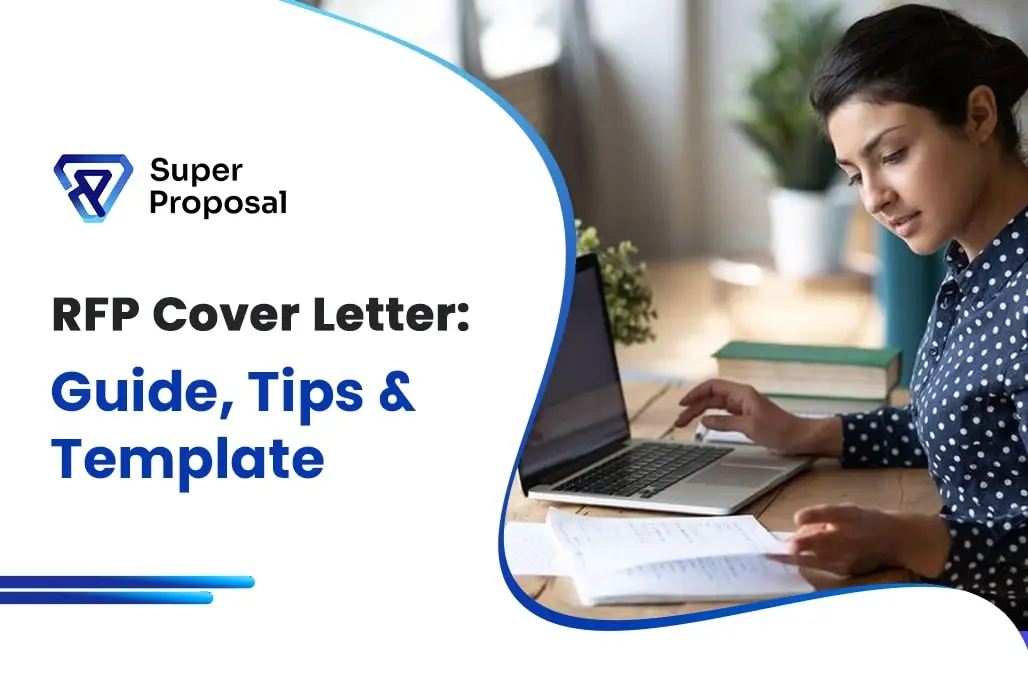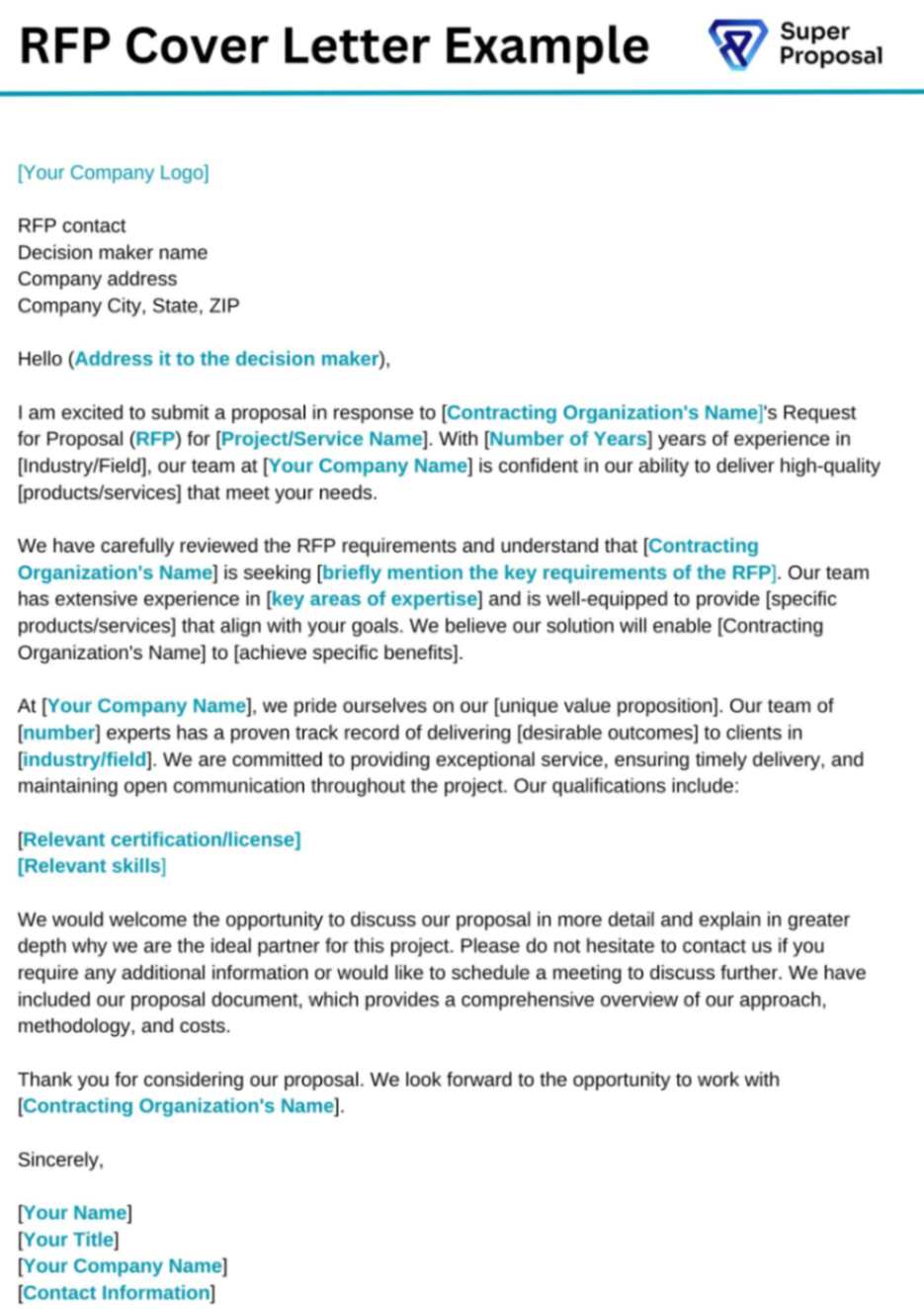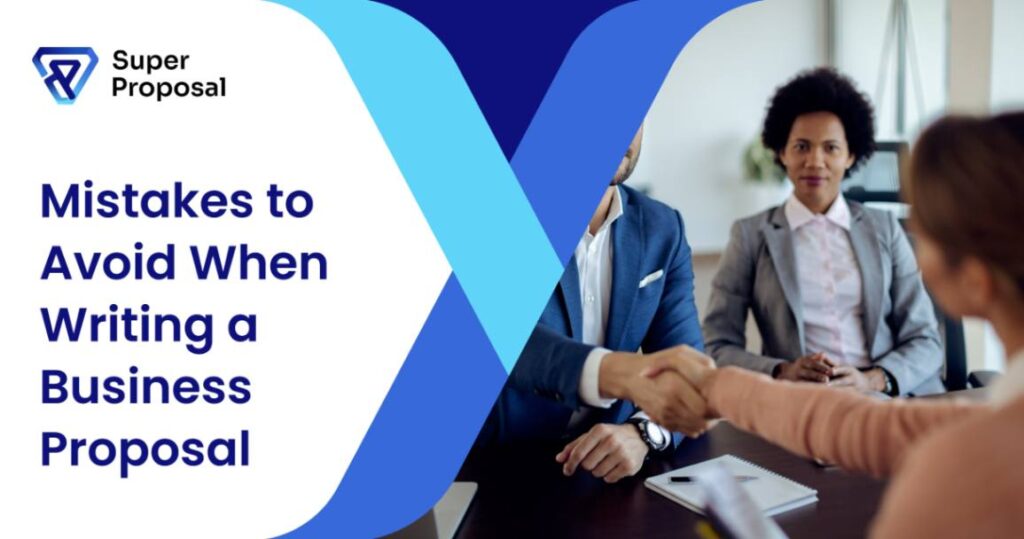RFP Cover Letter: Guide, Tips & Template
NOV 14, 2024 | LAST UPDATED ON NOV 14, 2024 BY ANGELICA NAIDU

Got an RFP and struggling to figure out your next steps? Well, we are here to help you close that deal like a pro! Responding to an RFP should be a very strategic move; a cover letter is what can make or break the deal. It’s like the face of your proposal. A cover letter will help the client decide if they are willing to move forward with you or not.
So, here we are with a detailed guide on how you can craft an impactful RFP cover letter. The tips and tricks mentioned in the blog below are definitely going to help you understand the perspective of the client and then draft a cover letter accordingly. Let us help you take this chance and make a lasting impression.
Table of Contents
ToggleWhat is an RFP proposal cover letter?
An RFP cover letter is an introduction to the proposal where you highlight the qualifications of your company and elaborate on why your product or service is the best choice. Whenever you respond to an RFP, the first thing the client sees is your cover letter. Take it as a chance to give out a positive first impression. So, make sure it’s a concise document that does not exceed one page, and keep the tone conversational. An RFP cover letter is also known as an RFP response cover letter, bid proposal cover letter, or a RFP cover page.
Let’s understand what an RFP cover letter is:
- Elaborates on your qualifications to accomplish the business’s determined goal.
- Showcases the benefits of opting for your product/service.
- Demonstrate your dedication by highlighting your achievements and skills.
Let’s see what an RFP cover letter should not be:
- It should not be all salesy; you can make it persuasive with the tone of writing and including your achievement.
- A generic cover letter that does not focus solely on the business that requested a proposal.
- Don’t go all in with your detailed services and strategy for how you’ll be executing, instead, focus on presenting your business.
Why a well-written RFP cover letter matters
An request for proposal cover letter is not just a document; it showcases your dedication to standing out and getting noticed. It sets the stage for the business to understand and evaluate the rest of your proposal. So, let us understand in detail why a well-written RFP cover letter is important.
- It helps your business deepen the connection with the other party by giving them a sense of who and what you are.
- Showcases what sets you apart from the competition by reinforcing your brand values and expertise.
- Highlight what makes your business unique by promoting your key differentiators.
- Enables evaluators to get in touch with you easily by establishing a primary point of contact.
The quality of your RFP cover letter determines whether the business reads it carefully, skims it, or ignores it completely. Here’s where a well-written cover letter comes into the picture. When you understand their business and requirements, it becomes easier for you to talk to them in a way they understand, right? The same is true with a cover letter. You should write it in a way that directly hits the requirements of the business while highlighting your skills.
5 Essential components of a successful RFP Cover Letter!
You’ve understood in the above section why an RFP cover letter matters. Let’s also understand how you should frame it to create the maximum positive impact and get your deals closed in a flash. Below, we have elaborated on five major points to be noticed in those tonnes of cover letters received by the client.
Address your letter to a named contact at the organization.
It’s often the small details that differentiate a good and outstanding cover letter. Always ensure that you address the RFP response cover letter to a named contact within the contracting organization. It is worth putting in the extra effort as you now know who the decision maker is, and you can cater to them directly.
By doing this, you show your seriousness and dedication towards the project and the people involved. Adding this very minute personal touch can highlight your cover letter and bring you closer to closing the deal.
Introduction and greeting
Never start your cover letter by thanking the business. It’s boring, and literally, all your competitors would be doing the same. You have the chance to be different, but how will you do that? Keep yourself in the position of the decision maker, and now think about what would catch your eyes the most. It’s never a generic cover letter; it’s always personalized. So, you start with the information required for the client; this will help them understand that you have actually done your research and are here with solid experience and skills.
Summary of RFP needs
RFPs are more about the needs of the clients and less about your business. So, before writing an RFP cover letter, make sure to research and deeply understand the requirements of the client. Here is your chance to demonstrate your understanding of their business and needs with a conversational cover that is indeed interesting to read and keeps the reader hooked till the end.
Your business qualifications and USP
This is your space to get promotional, but ensure that it is not too salesy. Use this section to highlight your qualifications and your USP. Elaborate in detail what you do, how you do, what makes you different, and why they should choose you over the other competitors.
A closing call to action
End your cover letter with a very actionable call to action. You have to frame it in a way that leads the client to genuinely take some kind of action. Remember, words have the power to cause action; use them smartly. So, state very clearly what the next steps they should be taking, create a clear path for them, and leave no space for confusion as to what to do next. This could be connecting them with previous clients for reviews, reaching out to your team if you have any doubts, or contacting them to move forward to close the deal.
We have Your Go-to RFP Cover Letter Template ready!
Writing an RFP cover letter from scratch is definitely time-consuming and challenging. Even professionals today use Super Proposal’s pre-designed templates to reduce the time and create a presentable cover letter. We’ve added an RFP cover letter example for you below:

Download RFP Cover Letter Template in Word
Dos and don't while writing a cover letter
As you move forward with the cover letter for an rfp, it’s important you understand in detail the do’s and dont’s of an RFP cover letter. Having this knowledge will help you craft a more customized and client-centric cover letter.
Do’s
Address it to the right people
Before sending out the proposal, you should know who the decision maker is and who will be reviewing your proposal. This could also be a set of people, so to understand this, get in touch with your RFP contact and clearly understand whom to address.
If you’re generically addressing the client, it showcases a lack of research and dedication. Why should someone choose you when you did not even try to know their name? It’ll all be just a waste of time for both parties, no matter how much you’ve invested in the bid proposal.
On the other hand, if you choose to make this little effort, it directly clicks the decision maker and builds a connection. Where they will be actually motivated to understand your business and expertise and if you suit their requirements.
Keep it fresh and be human
We need to understand clients get multiple proposals that provide more or less the same services and information. Now imagine yourself in the position of the client who is going through multiple RFP responses, and none of them have put in the effort to be unique. So, having 10 responses that start with thank you for the opportunity isn’t better than offering the client something unique that also helps you stand out from the competition and shows your dedication towards the project.
Use formatting to grab their attention
Grabbing the client’s attention is the only way to create a lasting impression. Your cover letter should be visually appealing, concise, and engaging. A cover letter is a one-page document, and it is important to include every component of it strategically. The focus should be on 3 major areas: opening, center, and closing.
Opening
Does it grab your attention when you get a notification with your phone address and your name? We’re guessing yes. Similarly, when you address a person’s name in an RFP cover letter, you’ve already taken yourself a notch above the competitors.
Center
Make the center of your RFP cover letter the most attention-grabbing section by listing your USPs. Ensure that you do not mention or call out any of your competitors. Just focus on your business and highlight your skills.
Closing
Consider this as a closing of your sales pitch and leave the client with a call to action. Here, you need to mention how the client can proceed further if interested and how they can get in touch if there are any doubts. You can even directly mention the next steps to close the deal.
Elaborate on your understanding of their needs
Understanding the client’s business is essential for the success of any project without this knowledge progress is impossible. However, it is also important to document and present your insights clearly.
You can very easily do this by sharing your success story with similar kinds of projects and how you tackled the challenges and provided the previous clients with expected results. This will help the clients understand that you are aware of the challenges and pain points of the project and might be able to deal with it like a professional.
Stay true to your brand
Maintaining the authenticity of your brand should always be the top priority; that is what makes you unique. Your brand’s persona, culture, and values may be one of the reasons you received an RFP. While writing a cover letter, use your brand’s tone while targeting the client’s pain points. This way, you keep yourself authentic while catering to their needs simultaneously.
Dont's
Repeating information from the executive summary or proposal
It’s important to understand these 3 documents are different and have their own purposes. Keeping the information unique for each piece of content makes it much more interesting as the reader does not get bogged down by repetitive information and gets to know your brand a bit better.
Read more: How to write proposal executive summary
Don’t write a lengthy RFP cover letter introduction
We always suggest you keep it short and crisp. Get straight to the point and show your understanding of the prospect’s goals and needs. Let’s see why this is important: the purpose of a cover letter is to grab attention and get the client hooked. This can never be done through lengthy, boring content. It can only be done through short content that directly answers what the client might want to know. Enhancing your chances of closure.
Conclusion
Now that we have revealed the secrets of crafting a winning RFP cover letter, it’s time you put your skills to the test! With this knowledge and Super Proposals RFP cover letter templates, you can now close deals like a pro! Our templates are 100% customizable, so you can personalize them according to the client’s needs and grab their attention. Explore the power of Super Proposal today and see how easy closing deals can be. Book a demo session with our experts or get a 15-day free trial today!
Increase your close rates today!
Secure every pitch that you make with Super Proposal. Craft winning proposals, share and track them on a single, comprehensive platform.
✓ 15-Day Trial. No Credit Card Required.

Recent Post



